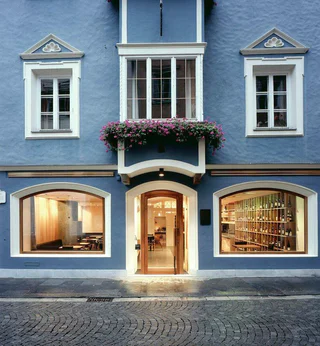
The Parish of St. Nicholas in Caminata/Kemanten
Caminata/Kematen, Pfitsch/Val di Vizze, Sterzing/Vipiteno and environs

Caminata/Kematen, Pfitsch/Val di Vizze, Sterzing/Vipiteno and environs

Mules/Mauls, Freienfeld/Campo di Trens, Sterzing/Vipiteno and environs

1/2
Vipiteno/Sterzing, Sterzing/Vipiteno, Sterzing/Vipiteno and environs

Valgenauna/Valgenäun, Freienfeld/Campo di Trens, Sterzing/Vipiteno and environs

Vipiteno/Sterzing, Sterzing/Vipiteno, Sterzing/Vipiteno and environs

1/2
S. Giacomo/St. Jakob - Val di Vizze/Pfitsch, Pfitsch/Val di Vizze, Sterzing/Vipiteno and environs

1/3
Stilves/Stilfes, Freienfeld/Campo di Trens, Sterzing/Vipiteno and environs

Vipiteno/Sterzing, Sterzing/Vipiteno, Sterzing/Vipiteno and environs

1/8
Vipiteno/Sterzing, Sterzing/Vipiteno, Sterzing/Vipiteno and environs

1/3
Vipiteno/Sterzing, Sterzing/Vipiteno, Sterzing/Vipiteno and environs

1/3
Vipiteno/Sterzing, Sterzing/Vipiteno, Sterzing/Vipiteno and environs

1/4
Trens/Trens, Freienfeld/Campo di Trens, Sterzing/Vipiteno and environs

1/7
Vipiteno/Sterzing, Sterzing/Vipiteno, Sterzing/Vipiteno and environs

1/3
Vipiteno/Sterzing, Sterzing/Vipiteno, Sterzing/Vipiteno and environs

Flaines/Flains, Pfitsch/Val di Vizze, Sterzing/Vipiteno and environs

1/6
Vipiteno/Sterzing, Sterzing/Vipiteno, Sterzing/Vipiteno and environs

S. Giacomo/St. Jakob - Val di Vizze/Pfitsch, Pfitsch/Val di Vizze, Sterzing/Vipiteno and environs

Prati/Wiesen, Pfitsch/Val di Vizze, Sterzing/Vipiteno and environs

1/4
Vipiteno/Sterzing, Sterzing/Vipiteno, Sterzing/Vipiteno and environs

Vipiteno/Sterzing, Sterzing/Vipiteno, Sterzing/Vipiteno and environs

1/3
Fuldres/Pfulters, Freienfeld/Campo di Trens, Sterzing/Vipiteno and environs

Vipiteno/Sterzing, Sterzing/Vipiteno, Sterzing/Vipiteno and environs

1/2
Vipiteno/Sterzing, Sterzing/Vipiteno, Sterzing/Vipiteno and environs

Mules/Mauls, Freienfeld/Campo di Trens, Sterzing/Vipiteno and environs

1/8
Vipiteno/Sterzing, Sterzing/Vipiteno, Sterzing/Vipiteno and environs

1/5
S. Giacomo/St. Jakob - Val di Vizze/Pfitsch, Pfitsch/Val di Vizze, Sterzing/Vipiteno and environs

1/2
Vipiteno/Sterzing, Sterzing/Vipiteno, Sterzing/Vipiteno and environs

Smudres/Schmuders, Pfitsch/Val di Vizze, Sterzing/Vipiteno and environs

1/2
Smudres/Schmuders, Pfitsch/Val di Vizze, Sterzing/Vipiteno and environs

1/2
Mazzes/Matzes, Sterzing/Vipiteno, Sterzing/Vipiteno and environs